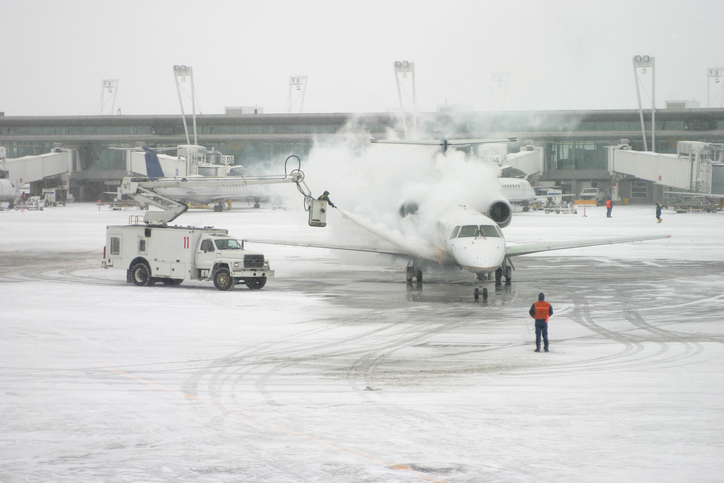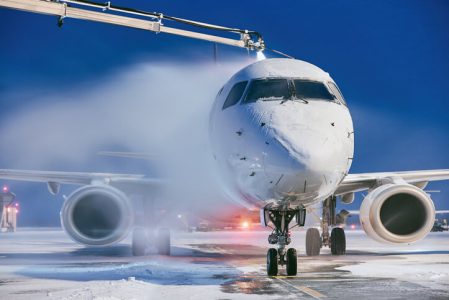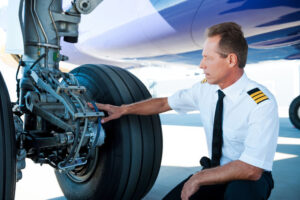Aviation Weather Approaches in Colder Weather
Get ready, colder aviation weather is on the way. While it’s lovely to see the sparkling snow-covered landscape, it’s important to prioritize safety when it comes to winter flying. The FAA has issued new guidance on deicing procedures, including changes to holdover times.
To ensure the effective application of anti-icing fluid, pilots and ground deicing service providers need to be aware of the updated information. It’s crucial not to rely on the details published in revision B of “Table B.2.4 – Amount of Fluid for Anti-Icing with Thickened Fluids” to determine if the fluid has been applied correctly.
Though holdover charts can be a bit confusing, it’s all part of the plan to keep us safe. It’s worth noting that using the quantities provided in table B.2.4 may not yield the expected holdover times. The table doesn’t account for new fluid formulations that increase viscosity and thickness. Revision C of AS6286 contains the updated information, but it’s important for all users to understand that table B.2.4 may not be accurate with the new fluids.
A good rule of thumb is to ensure comprehensive coverage of surfaces with the anti-icing fluid, creating a uniform coating. This can be confirmed visually when the fluid starts to run off the wings or tail.
Adherence to Guidelines is a Key to Safety
Following FAA guidelines is cruicial when preparing an aircraft for flying in cold weather conditions.
- Prevention of Ice Build-Up: According to FAA guidelines, pilots should ensure that no frost, ice, or snow adheres to the airplane before dispatch or takeoff. This is critical as ice build-up can affect the aerodynamics of the aircraft, leading to potential accidents.
- Ensuring Proper Insulation: The FAA emphasizes proper insulation against heat loss, particularly for reciprocating engines. In extremely cold temperatures, all oil lines and oil must be adequately insulated.
- Safe Winter Operations: By adhering to FAA guidelines, pilots can ensure safe winter operations. The FAA provides specific procedures for dealing with various weather conditions, from freezing rain to heavy snow.
- Maintenance and Performance: Weather conditions greatly affect aircraft maintenance and performance. Following FAA guidelines helps to maintain fuel efficiency and respond appropriately to air pressure, wind speed, and direction.
- In-flight Weather Information: FAA guidelines provide significant in-flight weather information that is operational to the safety of all aircraft.
- Use of Weather Information: Today’s pilots have access to an abundance of weather information sources. However, having this information is only part of the weather decision-making process. FAA guidelines help pilots to interpret and apply this information effectively.
- General Operating and Flight Rules: The FAA’s Part 91 provides general operating and flight rules, including instrument and equipment requirements for powered civil aircraft with standard category U.S. airworthiness certificates.
- Operating Requirements for Commuters: For commuter operations, the FAA’s Part 135 provides aeronautical decision-making and judgment training tailored to the operator’s flight operations and aviation environment.
- Guidelines for Flight in Icing Conditions: The FAA provides specific guidelines for flight in icing conditions, which can significantly impact flight safety if not properly managed.
- Cold Weather Knowledge: Adequate cold weather knowledge appropriate to the aircraft used and the geographical and weather conditions is essential. FAA guidelines provide this knowledge, helping pilots to ensure safety.
In addition to the guidance mentioned earlier, flight crews should be aware that FAA deicing program information and guidance documents are being relocated. The general information document on the aircraft ground deicing web page now houses previous and current versions of the notice. Changes to holdover times can also be found on this page, specifically in the summary for winter 2023-2024.

Aviation weather changes from season to season, keeping things interesting. It can be challenging to keep up with all the revisions and updates. However, it’s necessary to review them to ensure both safety and compliance. So, before the snow starts falling, make sure to familiarize yourself with these important changes for a secure and lawful flight.










